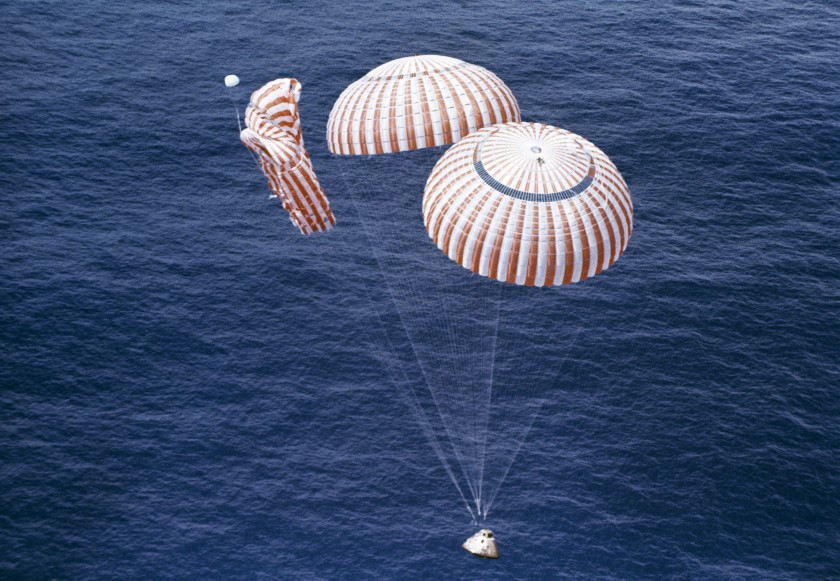By Bill D’Zio Originally published on www.westeastspace.com
Parachutes are plaguing space programs. SpaceX doesn’t like Parachutes. They are difficult to design, hard to package, and easy to damage. The larger the mass of the spacecraft, the more effort to slow down. Larger, more efficient, complex parachute systems are needed. Several failures have hit the industry over the last few years, including SpaceX Crew Dragon, ESA ExoMars, Boeing CST-100, and the NASA Orion to name a few.
How do parachutes work and why are they hard?
The idea of a parachute is simple. All falling objects fall the same when under the same conditions… that is so long as no outside force is exerted on it. So two objects dropped from the same altitude, one a feather and hammer will fall equally. Don’t believe me? NASA tested it on the Moon. During Apollo 15 moon walk, Commander David Scott performed a live demonstration for the television cameras. Commander Scott did the Apollo 15 Hammer and Feather test. He held out a geologic hammer and a Falcon feather and dropped them at the same time. Because there is not an atmosphere on the Moon, they were essentially in a vacuum. With no air resistance force, the feather fell at the same rate as the hammer. Ironically, Apollo 15 had a second demonstration of falling objects when one of the parachutes failed to function as planned.

On Earth, and any other planet with an atmosphere, air acts as a resistance force for an object moving through it. We can get more air resistance force by increasing the surface area. Depending on the shape of the object, it’s orientation, and the amount of resistance will increase, and therefore slow the object down. Unbalanced and uncorrected resistance can cause the object to start to turn, twist and tumble. A parachute system is deployed to generate air resistance from the atmosphere. (note that the thicker the atmosphere the more resistance) Parachutes designed for use on Earth will not be the same as a parachute designed for Mars.
Beyond density of air, the resistance depends on the speed of the and slow a falling body, the flow of gas against and around its structure(Shape). This airflow not easily to calculate as it is complex and turbulent, especially at supersonic speeds. The Apollo program did, as Elon Musk mention, find challenge in the development and testing of the parachutes. It was described as a major difficulty in design and development due to a lack of adequate analytical methods for properly predicting dynamic behavior, loads and stresses. Fast forward fifty years, Apollo mission recommendation of continued development of prediction methods for parachutes still plagues spacecraft.
Some recent challenges with parachutes
In 2019, Boeing successfully tested out the emergency escape system on its new Starliner spacecraft, but one of its three parachutes failed to deploy. Since the parachutes were de.….…